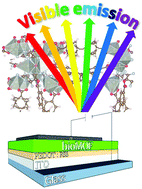*
Corresponding authors
a
KU Leuven, Leuven Chem&Tech – Molecular Imaging and Photonics (MIP), Celestijnenlaan 200F post box 2404, Leuven 3001, Belgium
E-mail:
cristina.malvarez@uclm.es
b
Unidad nanoCRIB, Centro Regional de Investigaciones Biomédicas, Albacete, Spain
c
KU Leuven, Leuven Chem&Tech – Centre for Membrane Separations, Adsorption, Catalysis and Spectroscopy for Sustainable Solutions (cMACS), Celestijnenlaan 200F post box 2454, Leuven 3001, Belgium
E-mail:
maarten.roeffaers@kuleuven.be, dirk.devos@kuleuven.be
d
Centro de Investigaciones en Óptica, A. C. Loma del Bosque 115, Colonia Lomas del Campestre, León, Guanajuato 37150, Mexico
e
Department of Inorganic Chemistry and Technology, National Institute of Chemistry, Hajdrihova 19, Ljubljana 1001, Slovenia
f
Department of Materials and Environmental Chemistry, Stockholm University, Svante Arrhenius väg 16C, Stockholm 106 91, Sweden
g
Queen Mary University of London, School of Engineering and Materials Science, Mile End Road, London E1 4NS, UK
h
University of Strasbourg, CNRS, ISIS UMR 7006, 8 Allée Gaspard Monge, Strasbourg 67000, France



 Please wait while we load your content...
Please wait while we load your content...